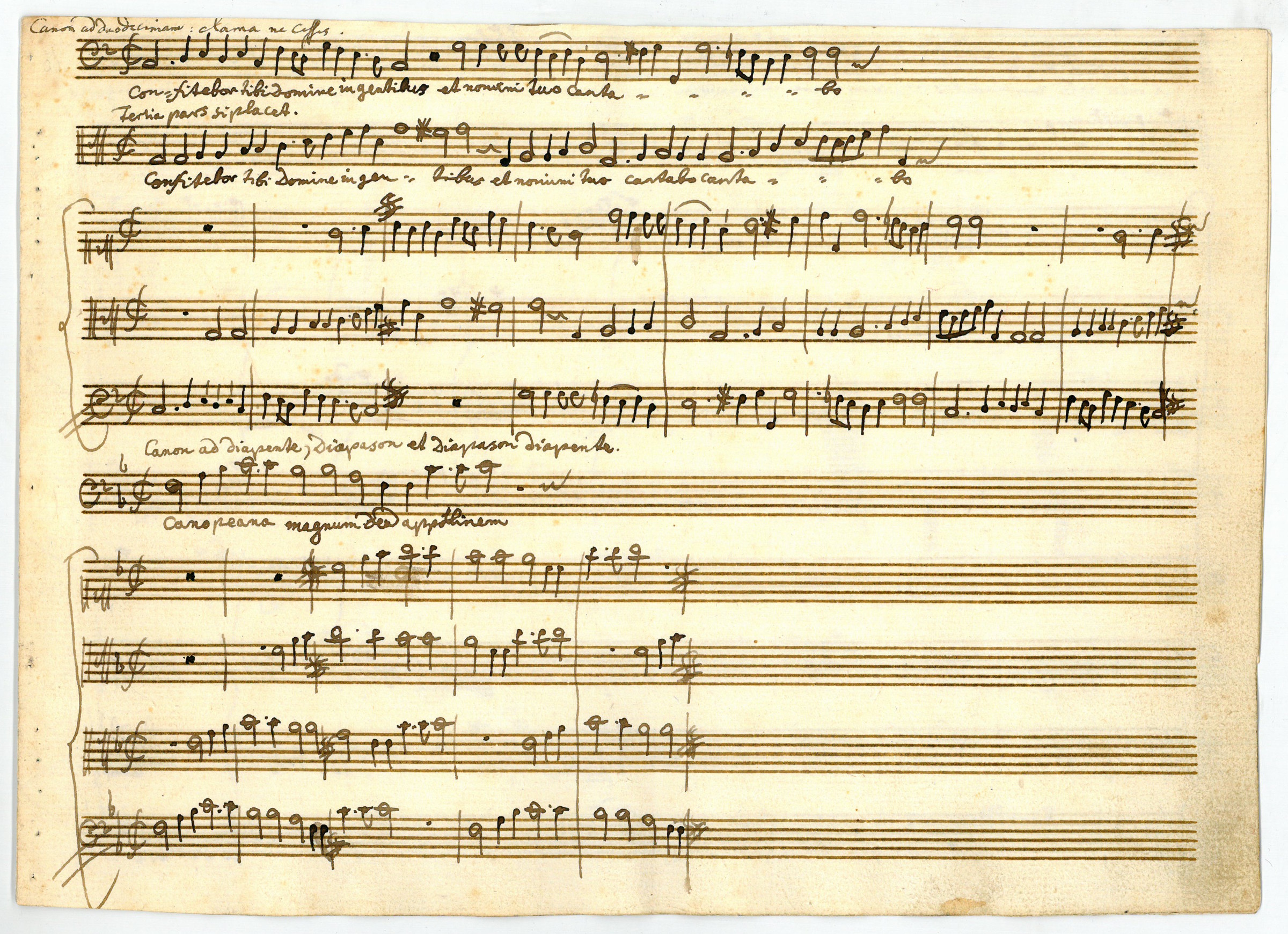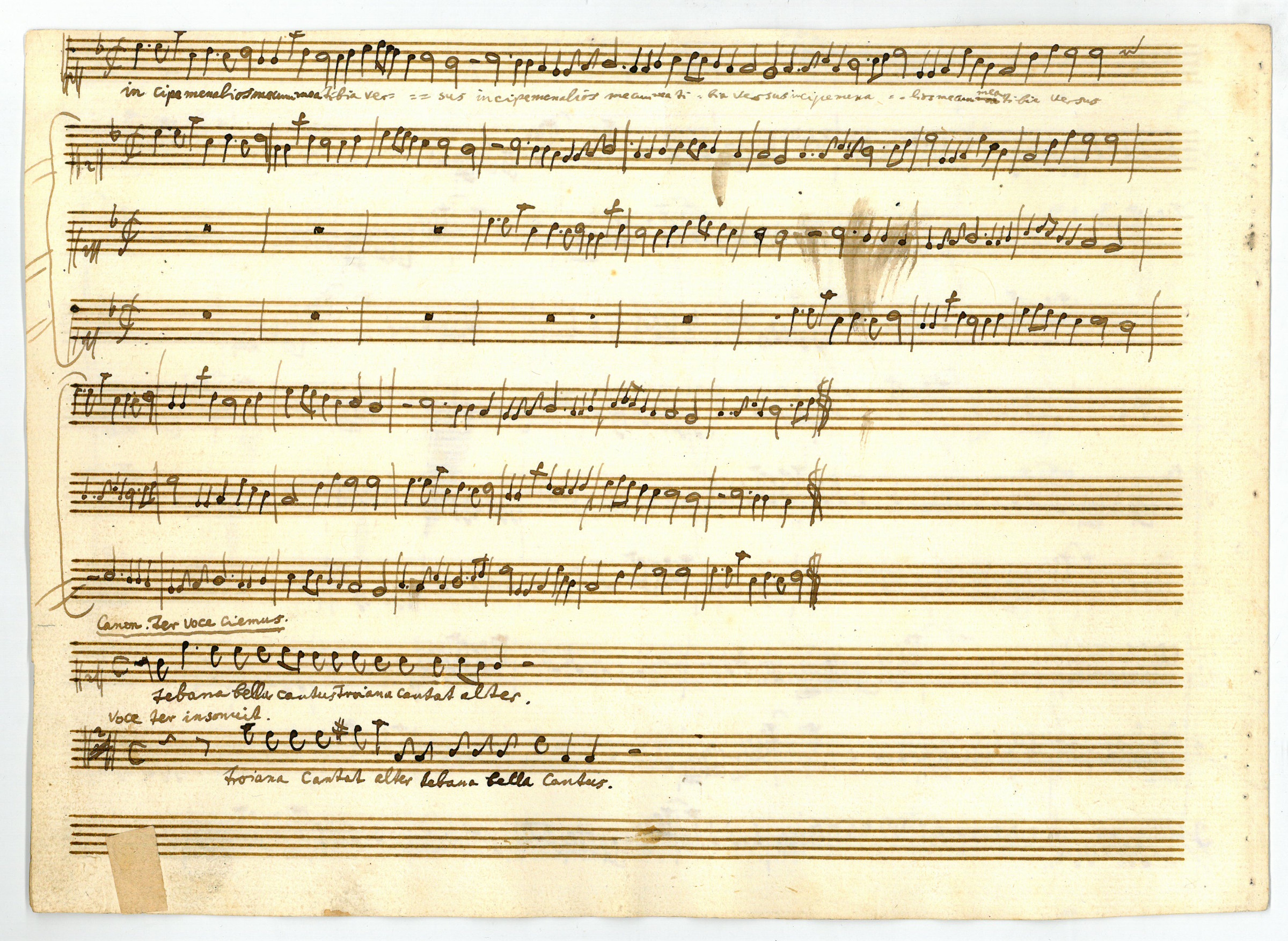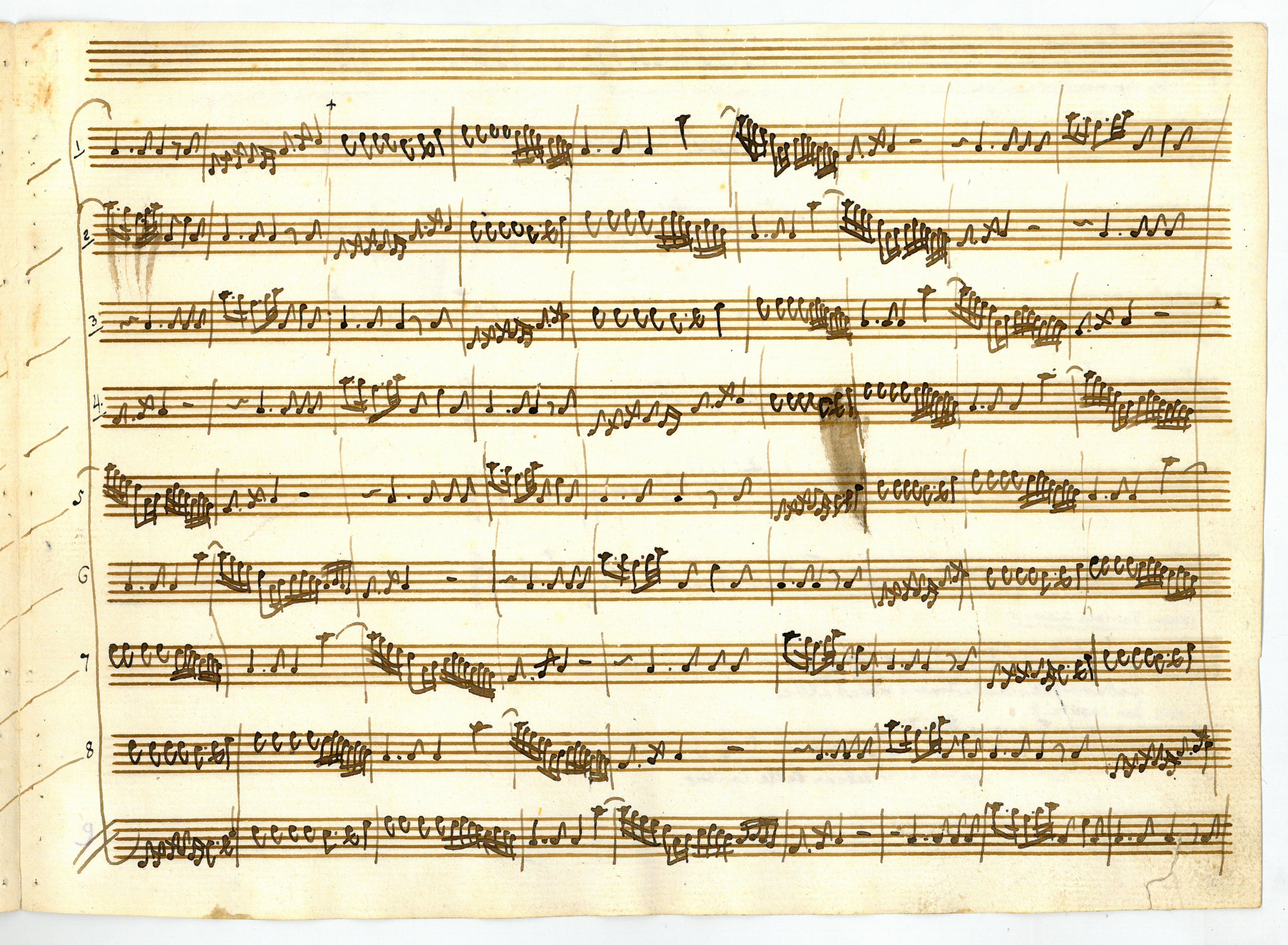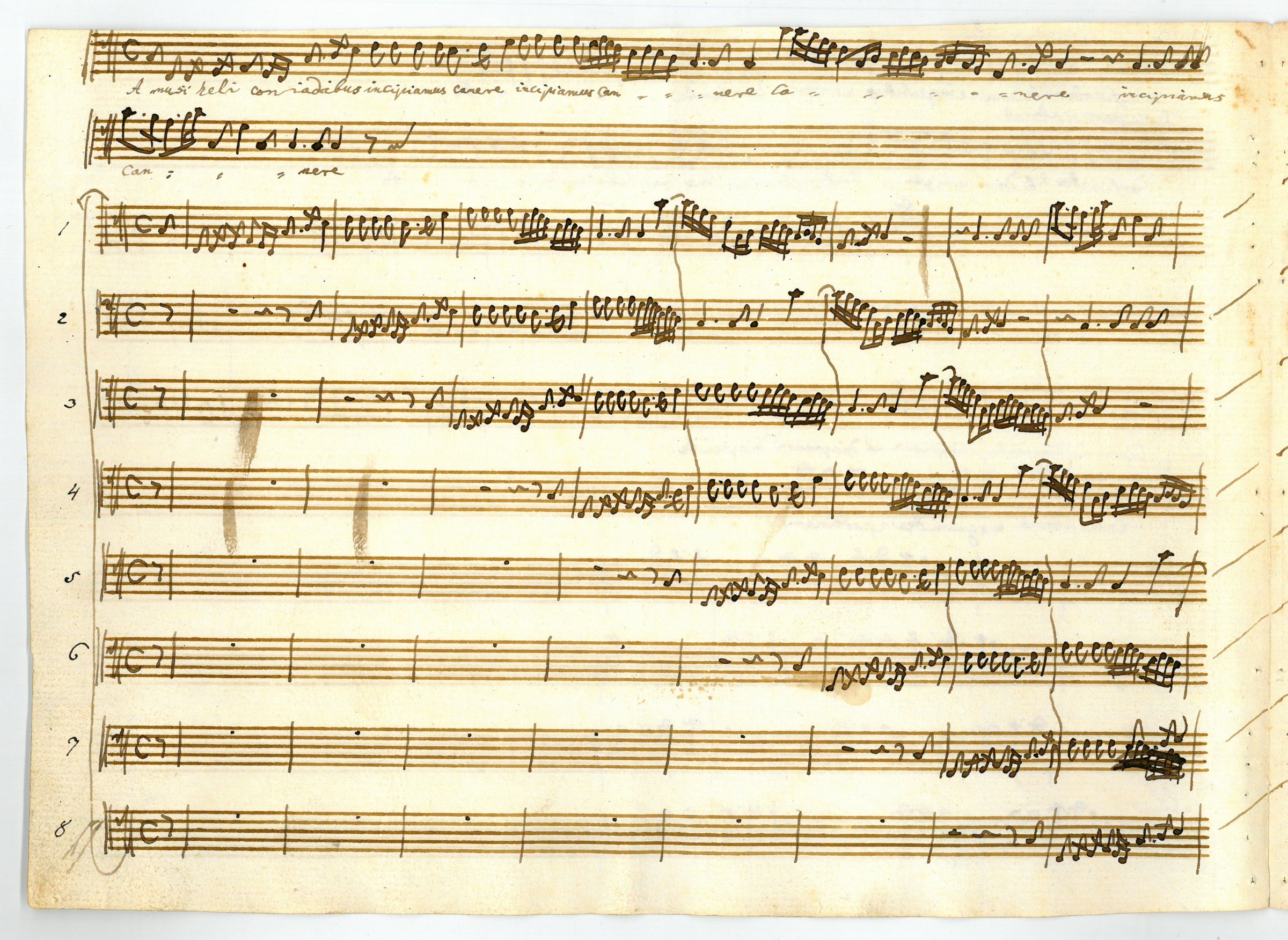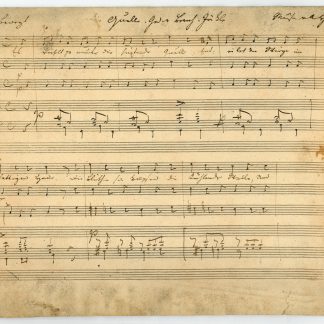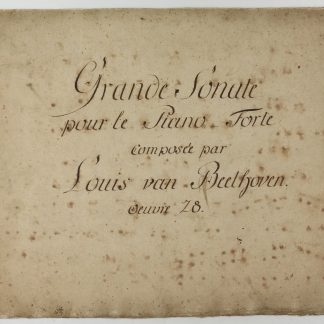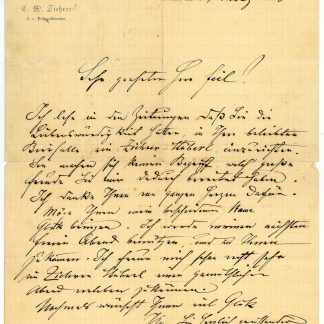From the collection of Aloys Fuchs in Vienna
Autograph musical manuscript.
Oblong. 4 pp. 10 lines.
A manuscript containing four complete canon compositions (each with theme and interpretation), as well as the theme of one other canon, all with autograph texts.
A three-part canon entitled "Canon ad duodecimam: clama ne cesses" on the first page, with counterpart, set to "Confitebor tibi Domine [...]", 8 bars. Below, titled "Canon ad diapente, Diapason et Diapason diapente", a four-part canon set to "Cano peana magnum Deu[m] appollinem", 5 bars. A nine-part canon on pp. 2 and 3, set to "A musi[s] heliconiadibus incipiamus canere [...]", 17 bars, with the voices following one bar at a time. A three-part canon on p. 4, set to the words "incipe menalios mecum [...]", 15 bars. Below, the theme of another canon, entitled "Canon. Ter voce ciemus" with the addition "Voce ter insonuit", set to "Tebana bella cantus Troiana cantat alter", as well as their reversal "Troiana cantat alter Tebana bella cantus".
The Köchel catalogue (6th ed., 1964) lists the first canon at No. 73r (3) in a differing version. The second canon is not mentioned, the third and fourth appear at Nos. 73x (13 and 14); the fifth canon is part of No. 73r (4).
Regarding No. 73x, the Köchel catalogue reports that "when Leopold and Wolfgang were in Bologna in summer 1770, Padre Martini presented them with the first two volumes of his three-volume history of music ["Storia della musica"], of volume two probably merely with the plates [...] Wolfgang was presumably more attracted to the artistic canonic structures than to the scholarly text. Dissolving them was likely part of his education with Padre Martini. Whether all of the manuscripts originate from that time remains unclear" (transl.). It is possible that Mozart re-engaged himself in the canons at a later point in his life as well.
The first canon appears to be modelled on Martini's canon I/67, canons two and three resembling canon II/1. The themes of the fifth canon exactly correspond to the vignette from the "Storia della Musica" II/41.
From the collection of Aloys Fuchs in Vienna, who combined the 14 canonic studies, mentioned in the Köchel catalogue at No. 73x, to form an anthology (the manuscript of the first 12 studies was sold in 1958 by J. A. Stargardt). Last at J. A. Stargardt in 1970 (with reproductions of pages 2 and 3 in their original size on folding plates).
Edges sharply trimmed; traces of stitching on the left edge. A few pencil notes in an unknown hand. A small, rebacked tear at the lower corner of page 4.

